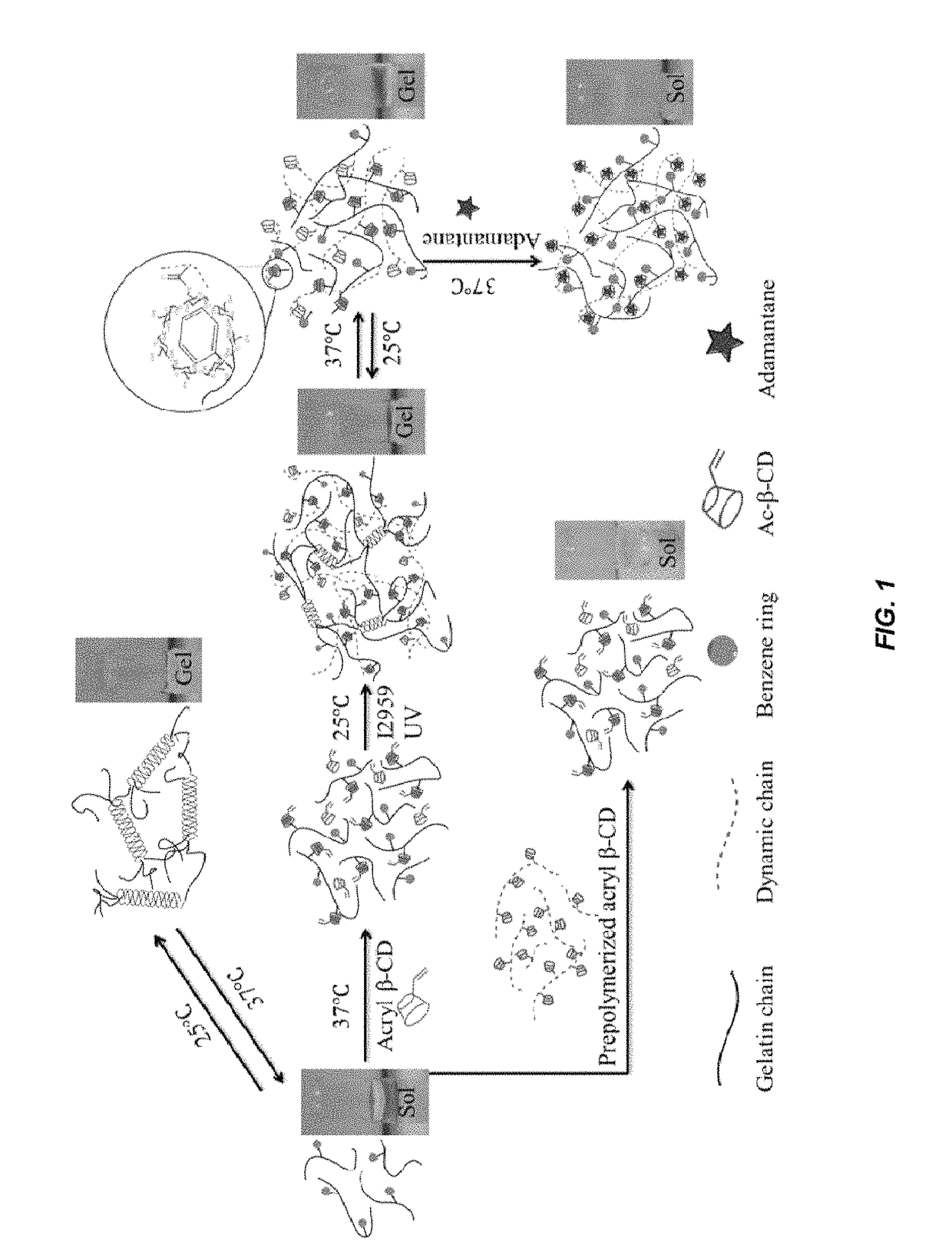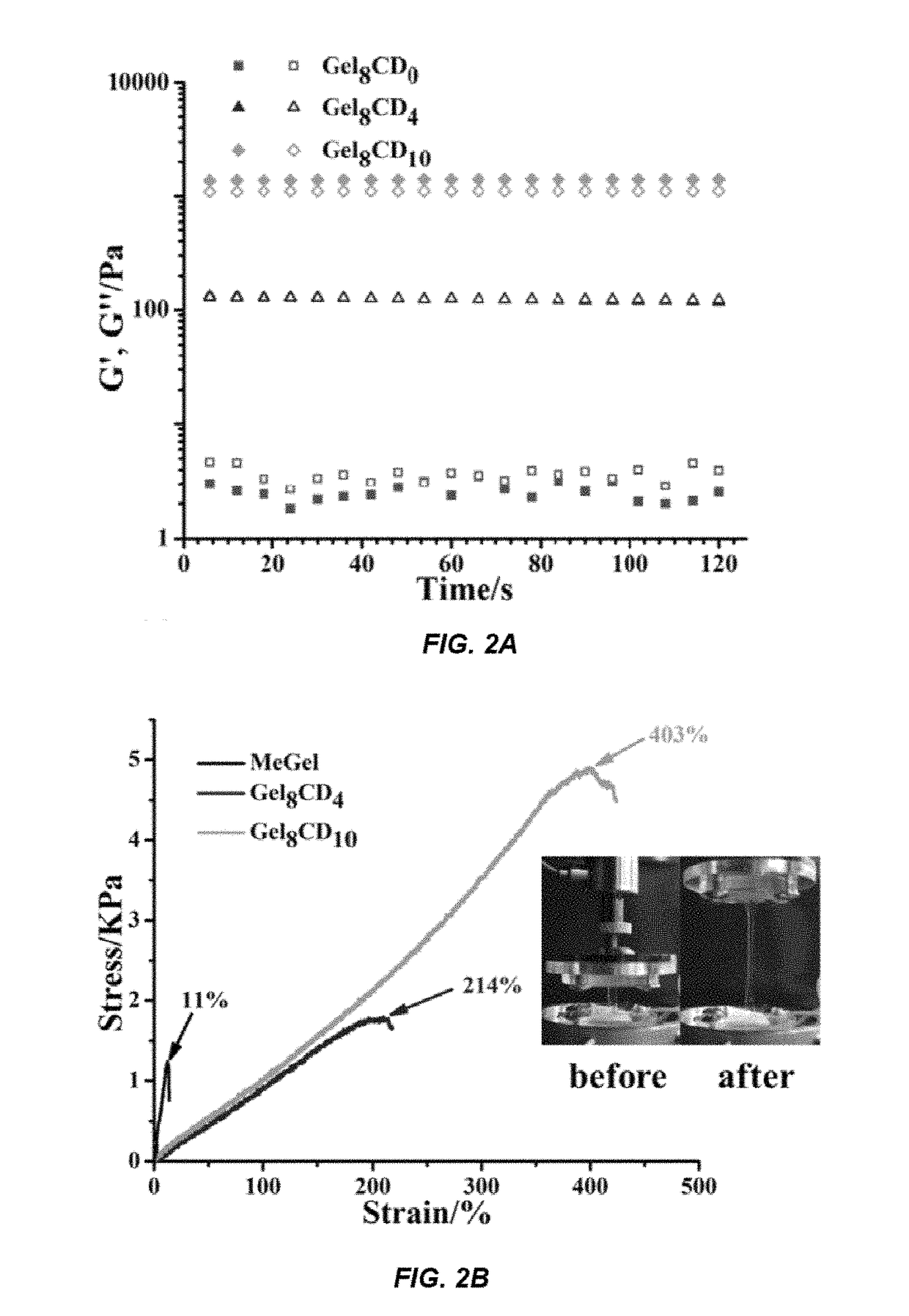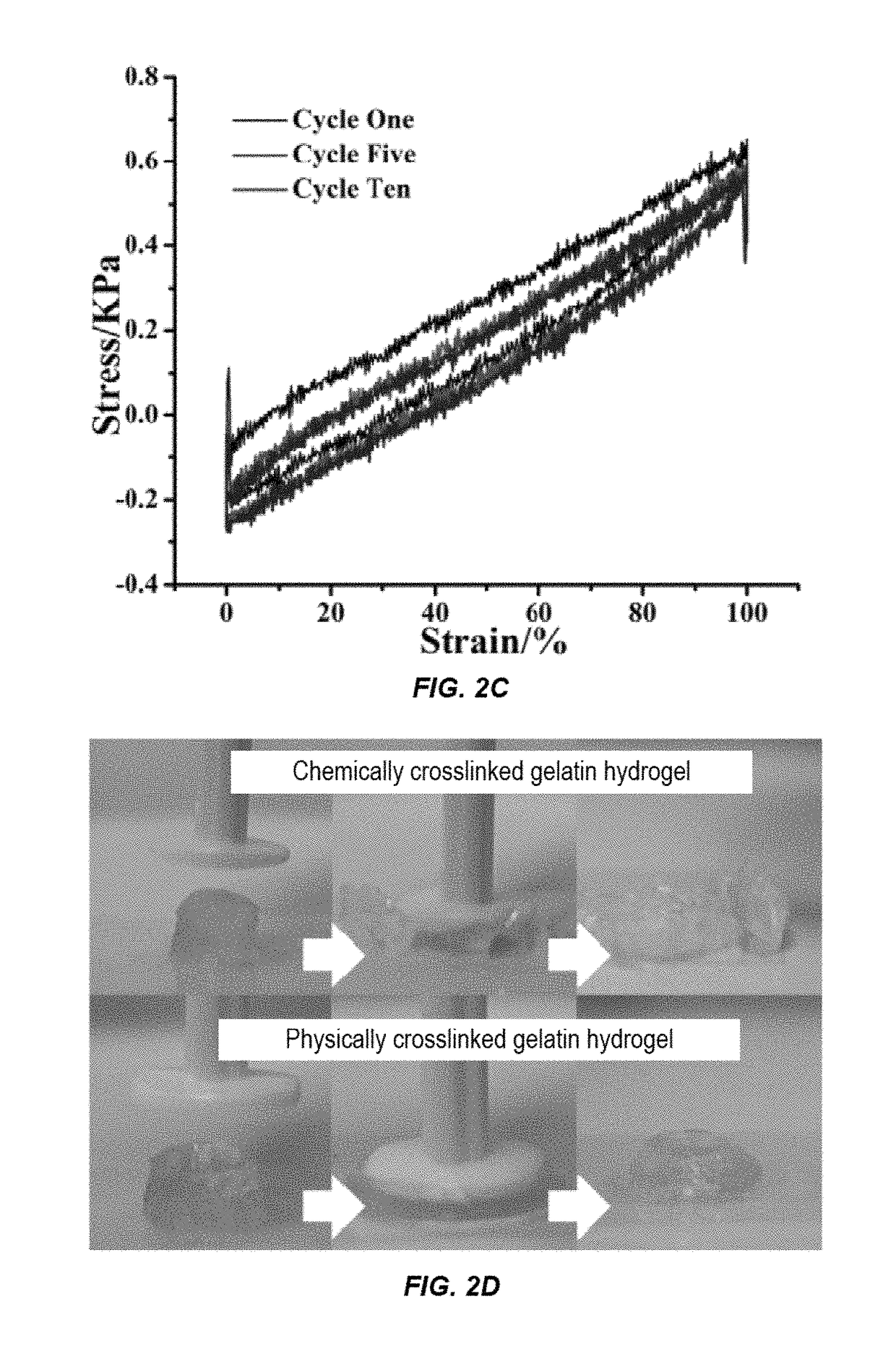Bioadhesive and injectable hydrogel
a bioadhesive and hydrogel technology, applied in the field of new supramolecular hydrogels, can solve the problems of inability to self-heal, difficult to inject, weak mechanical properties, etc., and achieve the effects of reducing the likelihood of fragmentation, enhancing retention, and improving biocompatibility
- Summary
- Abstract
- Description
- Claims
- Application Information
AI Technical Summary
Benefits of technology
Problems solved by technology
Method used
Image
Examples
example 1
[0052]Biopolymeric hydrogels are promising injectable materials for many biomedical applications. Here the inventors provide a novel and facile supramolecular approach to prepare biopolymeric hydrogels, which is free from complex modifications and direct chemical crosslinking of biopolymers. The inventors have prepared an acrylated gelatinous “Host-Guest Macromer” (HGM) via the efficient host-guest complexation between phenylalanines of gelatin and the free diffusing photo-crosslinkable acrylated β-cyclodextrins monomer (Ac-β-CD). Subsequent photo-initiated radical polymerization of the HGM produces highly elastic, stretchable, injectable and self-healable supramolecular hydrogels that are solely stabilized by the physical host (β-CD)-guest (benzene ring of phenylalanine) complexation. The enhanced mechanical resilience and self-healing capability of the HGM supramolecular hydrogels makes them ideal carrier materials of therapeutic cells / drugs for repairing load bearing tissues. The...
PUM
| Property | Measurement | Unit |
|---|---|---|
| melting point | aaaaa | aaaaa |
| tensile strain | aaaaa | aaaaa |
| gap size | aaaaa | aaaaa |
Abstract
Description
Claims
Application Information
 Login to View More
Login to View More - R&D
- Intellectual Property
- Life Sciences
- Materials
- Tech Scout
- Unparalleled Data Quality
- Higher Quality Content
- 60% Fewer Hallucinations
Browse by: Latest US Patents, China's latest patents, Technical Efficacy Thesaurus, Application Domain, Technology Topic, Popular Technical Reports.
© 2025 PatSnap. All rights reserved.Legal|Privacy policy|Modern Slavery Act Transparency Statement|Sitemap|About US| Contact US: help@patsnap.com



